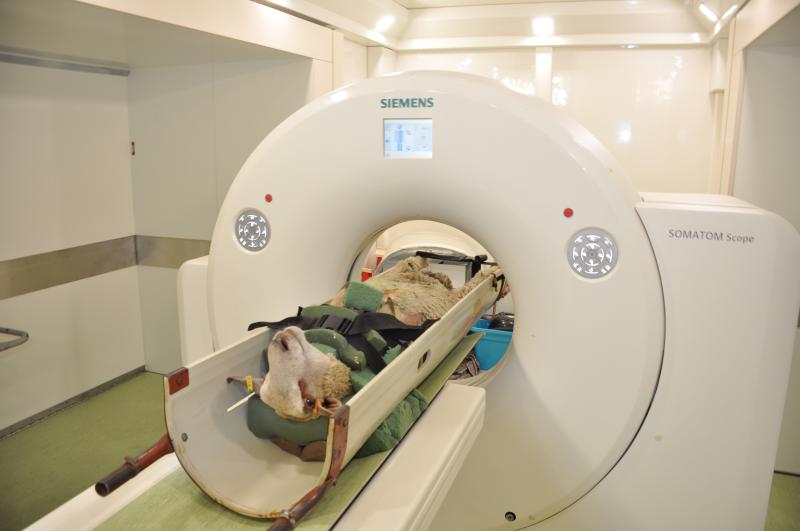
A team of farmers and scientists are using CT technology to assess and improve meat quality, to ensure that consumers are getting the leanest and tastiest lamb chops.
Using data from sheep which have been CT (Computed Tomography) scanned, researchers from Scotland’s Rural College (SRUC) are able to measure the fat and muscle content of sheep.
The method provides a sustainable approach by passing on favourable genes for generations to come.
CT scanning is just the tip of the iceberg according to AHDB, which has also been using other technology in its range of approaches to assess meat-eating quality.
These include an electronic ‘bite test’, known as a texture analyser, which is used to test the tenderness of meat and the wider industry has been working with video image analysis (VIA), which detects and quantifies carcase composition and saleable meat distribution.
Kirsty McLean, Manager of SRUC’s CT Scanning Unit said: “The CT machines are accurate enough to measure everything from spine length, to eye muscle area, to intramuscular fat levels – all of which is taken into account when working out how to produce the best-tasting meat.
“We’re then able to provide breeders with Estimated Breeding Values (EBVs) for these traits to help choose the best rams, and ultimately the best in quality for the product that ends up on your plate.”
This work is part of a wider government strategy to further improve meat quality and help increase consumption of beef, lamb and pork.
